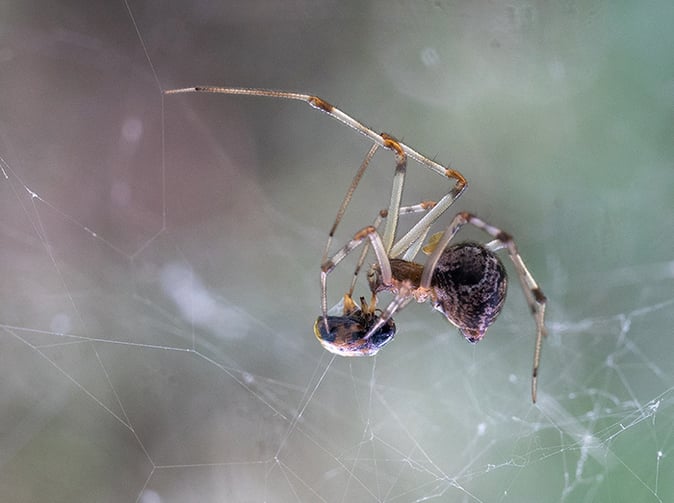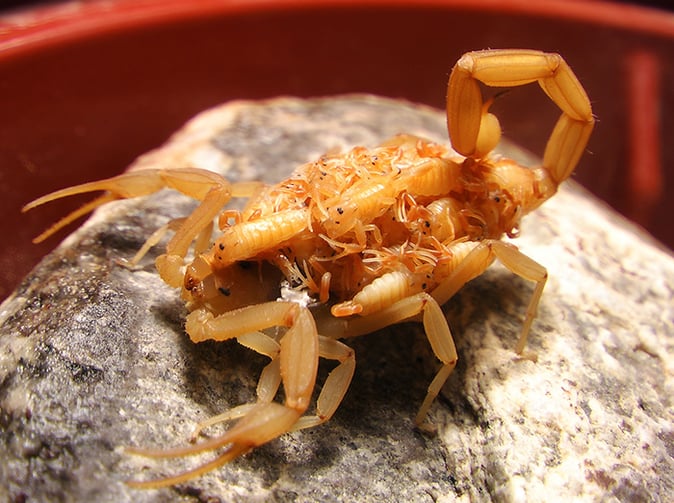We have a variety of rat species in Arizona, including a few native rats and several pack rat species. Cotton rats are the most abundant in the state, but they are agricultural pests, so we are going to focus on Norway rats (Rattus norvegicus) and roof rats (Rattus rattus) because they are the most common rats that enter homes and businesses in the Phoenix metro. While these two types of rats belong to the same genus, they vary in many ways, including physical appearance, behavior, nesting habits, and food preferences. The information in this article has been taken from trusted sources, such as the University of Arizona Cooperative Extension, and from our own personal training and experience in dealing with these pests. Keep reading to learn more about the differences between Norway rats and roof rats in Phoenix!

Physical differences between Norway rats and roof rats
When you see a rat scurry across the ground or run along a tree limb, you may tell what kind of rat you're dealing with by considering its appearance. Keep in mind that there is some variation based on age, size, and other factors.
Norway rats
Norway rats are known by many common names, including common rat, sewer rat, wharf rat, Hanover rat, street rat, and brown rat. If you see a brown rat on your property, you may have a Norway rat problem—but there are other rats that have this brown coloration. In fact, most rats have an overall brown appearance. Here are a few specific traits of a Norway rat:
- They grow 7 to 10 inches in length, not including tail length.
- They’re generally plump rodents.
- Their tails are almost always shorter than the length of their heads and bodies combined.
- Their tails are scaly, nearly hairless, dark on the top, and light on the bottom.
Roof rats
This species is also known by many common names, including roof rat, ship rat, house rat, and black rat. There is some misinformation on the internet regarding the color of these rats because they have brown hairs as well as black. Some roof rats appear dark brown. But most will look black with a lighter underbelly. Here are a few more facts to help you identify a roof rat:
- They’re about 6 to 8 inches in length, not including tail length.
- Their dark-colored, scaly tails are almost always longer than their heads and bodies combined.
- They have thinner bodies than Norway rats.
These identifying traits will help you figure out what kind of rat is scurrying around on your property, but your chances of seeing any kind of rat in the daytime are slim. Rats prefer nocturnal activity. Let's look at a few more behavioral traits.
Behavioral differences between Norway rats and roof rats
Norway rats like to stay close to the ground, though they can climb if needed. You may find these rats hiding in low-lying vegetation, particularly between landscaping and exterior walls. You may also find them underneath decks and other structures.
Roof rats are excellent climbers, but they sometimes adapt to low habitats when necessary. Both Norway rats and roof rats are versatile and adaptable, but roof rats are more equipped for climbing. When Norway rats get into a structure, they typically stay on the first floor. Roof rats often infest upper levels, including attics.
Nesting differences between Norway rats and roof rats
Norway rats are burrowing rodents. They like to create their nests in ground tunnels underneath piles of objects. They are particularly fond of damp habitats. This is why they sometimes become sewer rats in urban areas. Inside homes and other structures, these rats often nest in crawl spaces, basements, wall voids, under appliances, and storage areas.
Roof rats live in tree cavities. When they come onto your property, they may scale trees and run along branches or power lines to get onto your roof. Indoors, roof rats typically nest in attics, ceiling voids, wall voids, eaves and rafters, garages, and sheds.
Dietary preferences for Norway rats and roof rats
Norway rats have a far more diverse diet than roof rats. They readily eat meat, vegetables, fruits, grains, and even waste material. They are extremely opportunistic in their feeding patterns. Roof rats typically eat fruits, nuts, vegetables, and seeds, but they will eat other food sources in a pinch.
How to prevent rat problems
You can deter these rats by addressing conditions that attract them in the first place. Food sources, nesting sites, hiding places, and easy-to-access entry points should be identified and corrected. Here are a few specific rat prevention tips to start with:
- Keep grass cut low and landscape vegetation trimmed near the exterior of your home.
- Remove nuts, seeds, fruits, and other natural food options.
- Pick up pet waste in the yard.
- Keep trash in covered containers.
- Seal gaps, holes, and other openings rats can squeeze through.
- Update all weatherproofing materials.
- Repair damaged screens.
- Use wire mesh to bolster vulnerable spots where these rodents can create entry points by using their teeth.
- Trim tree branches away from your roofline.
- Replace broken or missing vent covers.
How to control Norway rats and roof rats
If you are vigilant, you can deter rats from entering structures on your property, but keep in mind that you're never alone when it comes to preventing rat infestations. The Titan Pest Control service team offers effective rodent control services that can help you discourage rodent activity and take care of any rats that have made it inside. For homeowners, we also provide year-round home pest control services that target insects and rodents that often infest homes in Phoenix and throughout Maricopa County.
Our Desert Guard, an integrated pest management program, is uniquely designed to stop rats and other pests that enjoy our desert environment from infesting homes and structures. Connect with us today to learn more.
It is challenging to control Norway rats and roof rats because there are many ways you can misunderstand the results you're getting. For example, trapping a few rats and not finding any more rats in your traps may cause you to think that your problem is fixed. But rats are smart; they can learn to avoid traps. Pest professionals use field-tested methods developed by industry experts. If you want to know for sure that your rat problem is solved, contact Titan Pest Control.
Testimonials

Request Your Free Estimate Today!
Have questions or need help with pest control? Simply complete the form below or give us a call!



